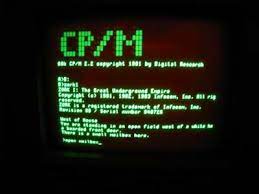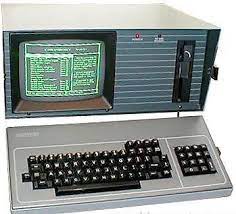Before Microsoft and Intel dominated the PC market through their common platform, the CP/M (https://cs.wikipedia.org/wiki/CP/M) operating system served small businesses in the late seventies and early eighties. It became a clear industry standard, yet in the end it did not succeed.
The birth of CP/M
CP/M was a text-based operating system created in 1974 by American programmer Gary Kildall of Digital Research. Its abbreviation was originally based on “Control Program/Monitor”, but later it was changed to the more user-friendly designation “Control Program for Microcomputers”.
This single-user and single-task operating system for microcomputers with eight-bit Intel 8080/85 microprocessors was modeled after the Altair computer. The launch of Zilog’s Z80 processor helped a lot. Together they revolutionized the world and were responsible for the rapid decline in microcomputer prices in the mid-70s.
MS-DOS was inspired by CP/M
In 1980, Microsoft released its first ever hardware product, the Z-80 SoftCard module. By connecting it to an Apple II computer, it was possible to run applications designed for the CP/M operating system. The CP/M operating system was to be used in the development of the personal computer (IBM PC 5150), but Digital Research did not like the proposed terms of the licensing agreement.
So IBM turned to Microsoft, which licensed it a product called 86-DOS from Seattle Computer Products (SCP). As a result, in August 1981, 86-DOS became IBM PC-DOS, and the company began shipping it with an IBM computer. Microsoft later bought 86-DOS from SCP for $50,000. Subsequently, the system was renamed MS-DOS. MS-DOS was nothing more than a clone of CP/M called 86-DOS. Its creator Tim Paterson (who worked for the SCP) was inspired by CP/M, borrowing its architecture and command line nature.
A missed opportunity
Understandably, Gary Kildall didn’t like what IBM did, so he tried to defend himself. However, Gary Kildall only concluded an agreement with IBM to supply CP/M-86 OS as an optional component of IBM computers. By this time, however, IBM shipped PC-DOS as the default system and cost much less than CP/M-86 (about $40 vs. $240).
The missed opportunity – to license IBM’s CP/M – is often referred to as one of the great tragedies in the history of computing. Gary Kildall could have become a billionaire, like Bill Gates, if he had made a deal with IBM.
Why MS-DOS won
When Microsoft entered into an operating system agreement with IBM in 1981, it negotiated that IBM would not only license PC-DOS, but also sell the system under its brand name (MS-DOS) to other PC creators as a generic operating system.
Soon after the start of PC sales from IBM, companies such as Compaq and Eagle Computer began selling similar machines to IBM, and licensed MS-DOS from Microsoft. Within a few years, hundreds of IBM PC clones had filled the computer market, and by 1986, MS-DOS-based computers had become the most popular personal computer platform in the U.S.



